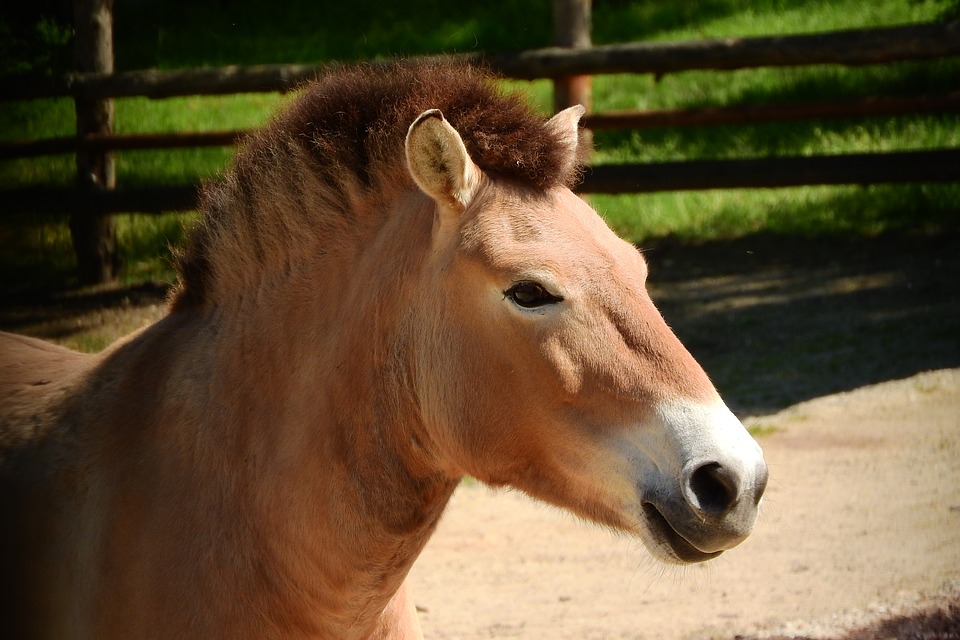
Saved from the Brink
The Przewalski’s Horse is one of conservation’s best success stories. This species was declared extinct in the wild in the 1960s and only housed in captivity. Specialist from around the world joined together to work hard and save this species. Today the IUCN estimates there are nearly 2,000 Przewalski’s Horses alive today due to these efforts. These animals were also first reintroduced back to the wild in 1992.
 Przewalski’s horse mare and foal.
Przewalski’s horse mare and foal.
The Przewalski’s Horse History
The equids’ (horses, donkeys or asses, zebra) history is one of the best understood of any species on Earth. All of these subspecies of Equus can trace their lineage back 55 million years to a small dog-like animal called Eohippus.
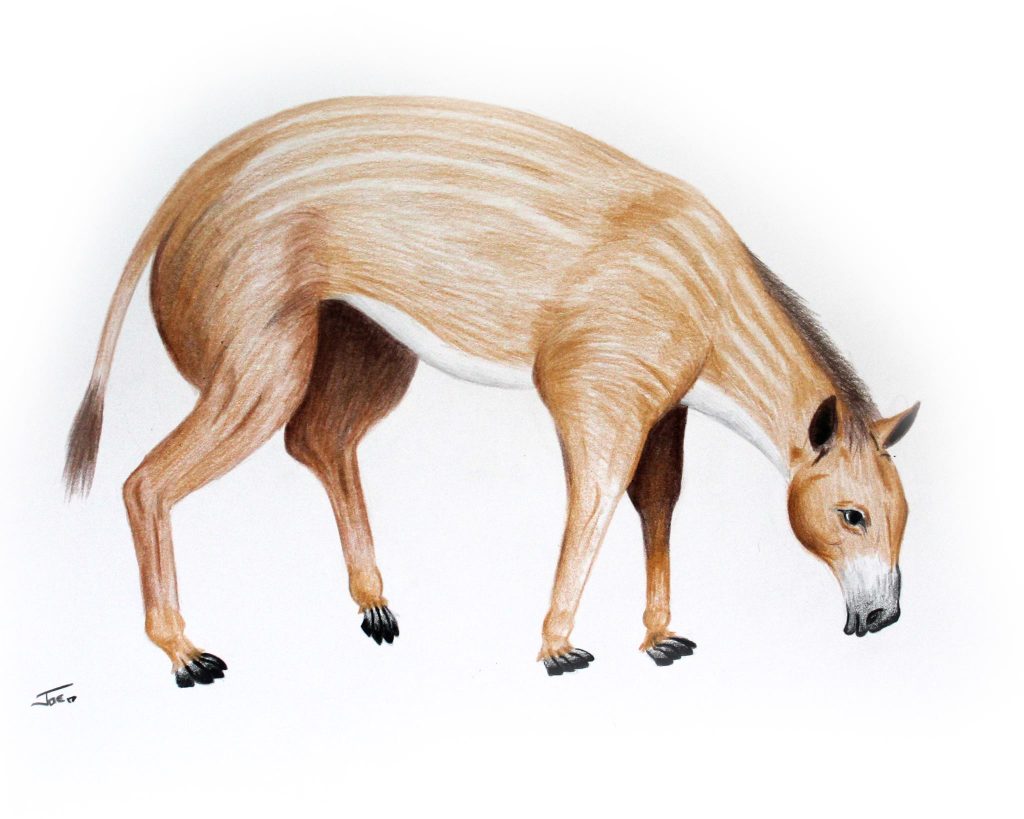 Artist rendition of Eohippus (drawn by Joe Richichi)
Artist rendition of Eohippus (drawn by Joe Richichi)
Over millions of years, the early equids evolved in North America from a 4-toed Eohippus to a single-toed ungulate today known as horses, donkeys (asses) and zebras. Fossil evidence gathered demonstrates the changes in bone structure over these many years. The outer toes are easily followed as they migrate up the leg of the Przewalski’s horse’s earliest ancestors.
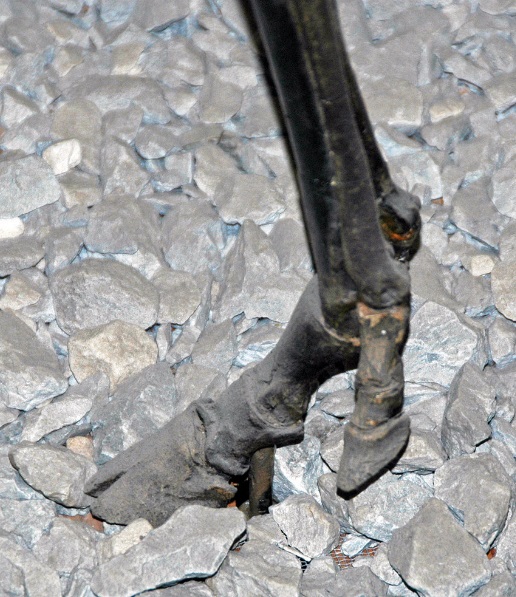 Skeletal fossil of Mesohippus demonstrating the three toes of earlier ancestors of today’s equids.
Skeletal fossil of Mesohippus demonstrating the three toes of earlier ancestors of today’s equids.
The Przewalski’s horse native range most likely stretched from Asia into Europe. However, over time these animals became more centered around modern-day Mongolia, China, and Russia. The last native Przewalski’s horse was spotted in Mongolia in 1969, and then was declared extinct in the wild years later with no further sightings.
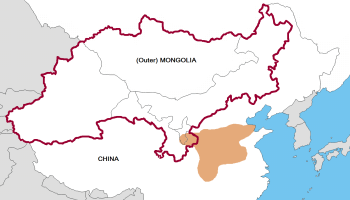 Proposed native range of the Przewalski’s horse.
Proposed native range of the Przewalski’s horse.
Traits of the Przewalski’s Horse
Compared to the domestic horse (Equus Caballus), the Przewalski’s horse (Equus ferus przewalskii) does not differ much in physical traits. While the Przewalski’s horse is shorter, they tend to be more robust and muscular compared to the leaner Thoroughbred or other domestic horse breeds. Additionally, the Przewalski’s horse has a total chromosome count of 66, compared to the domestic horse of 64. Therefore, most domestic horse breeds are traced back an extinct wild horse, called the Tarpan horse (Equus ferus ferus).
The Przewalski’s horse stands on average 56 in (142 cm) at the shoulder and can weigh up to 700 lbs. (300 kg). They are all usually a dun or red dun coloration with primitive markings along the legs and down the back. These specialized markings are called ‘primitive’ in reference to what most likely helped more ancient relatives hide from predators.
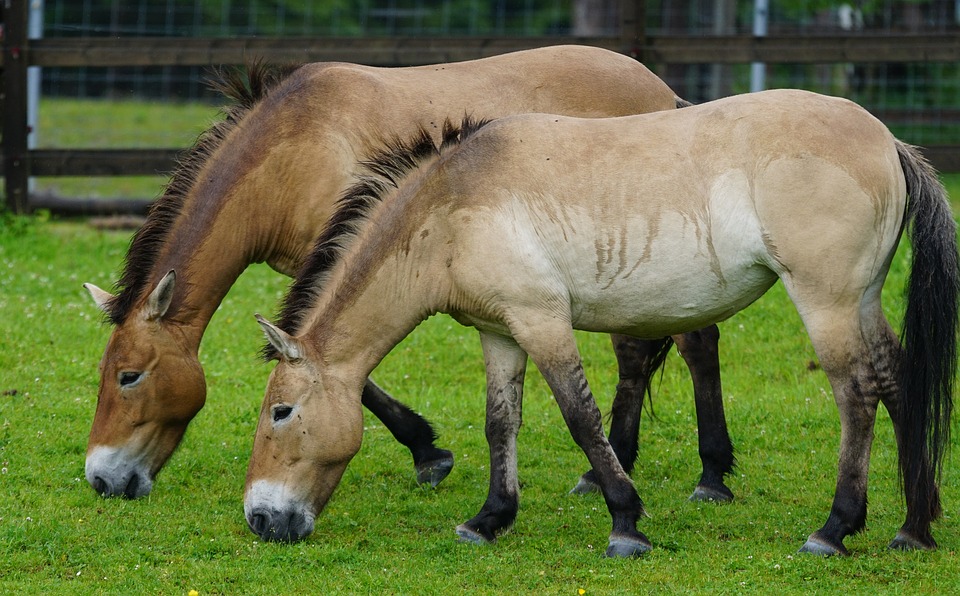 Pair of Przewalski’s horses grazing. Note the leg striping pattern, referred to as primitive markings.
Pair of Przewalski’s horses grazing. Note the leg striping pattern, referred to as primitive markings.
Conservation Success Story
After being declared extinct in the wild in the early 1970s, over 300 Przewalski’s horses were still held in captivity. [This is a correction from the podcast when Chris said only 12 were left in the 1970s, which was incorrect]. These animals were held mainly in zoos throughout the world.
All Przewalski’s horses can be traced back to an original group of 12 founder horses. In 1977 in the Netherlands, the Foundation for the Preservation and Protection the Przewalski’s horse was founded. An international collaboration was formed and zoos and conservation centers from around the world worked together to breed these animals.
Today, there are over 2,000 Przewalski’s horses throughout the world. In 1994, reintroduction of the Przewalski’s horse began in Mongolia. Subsequent reintroductions at another site in Mongolia and two sites in China have been established. It is estimated now there are nearly 400 free-ranging Przewalski’s horses at these four sites. Further reintroductions are planned in Russia and Kazakhstan.
What We Have Learned
While the Przewalski’s horse has been saved from extinction, there are still some challenges. Since these animals came from only 12 founders, they are considered inbred. This is dangerous to the entire population, specifically with disease. However, through careful management, experts from the around the world are working hard to establish a robust and healthy population.
By far the Przewalski’s horse is one of conservations greatest success stories. These animals, similar to the California condor and Black Footed ferret, were extinct in the wild and were brought back. Even more, all these species have been reintroduced to the wild. This is the goal of every conservation program.
Organizations to Support
Working directly to preserve the Przewalski’s horse in its native lands.


